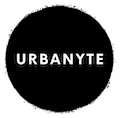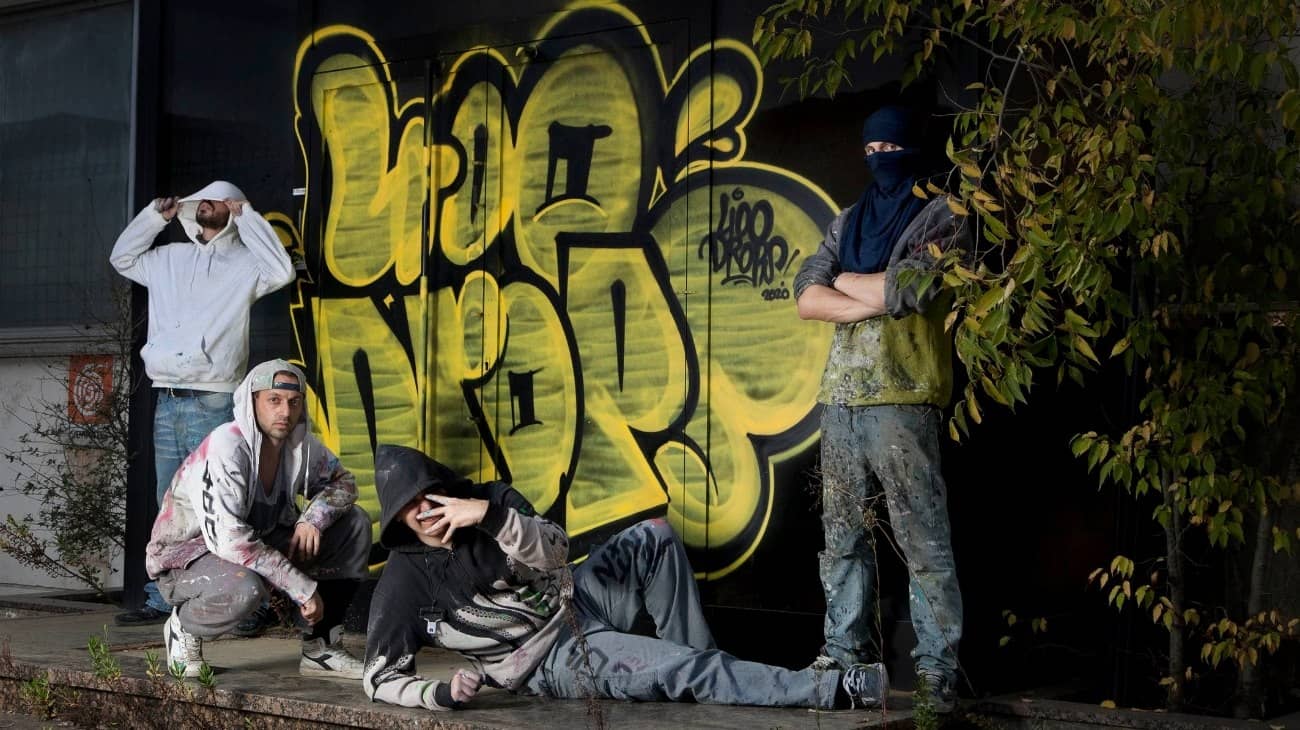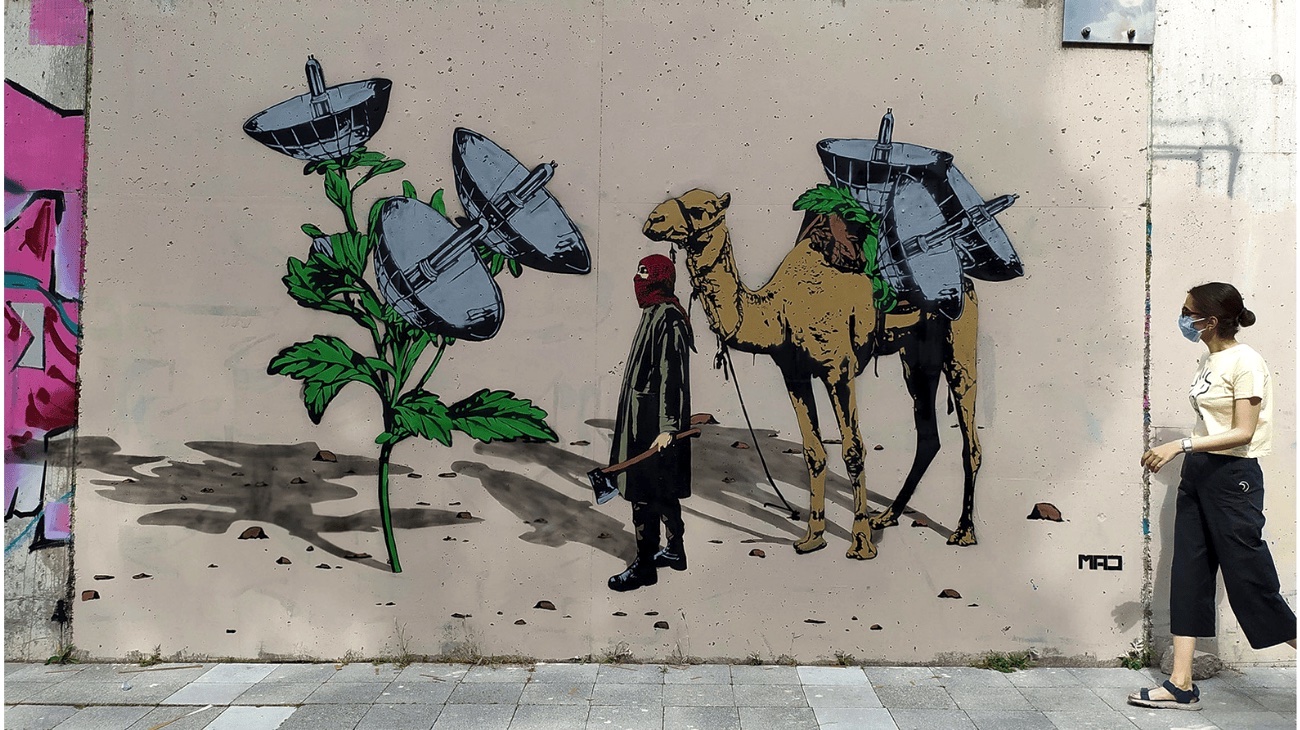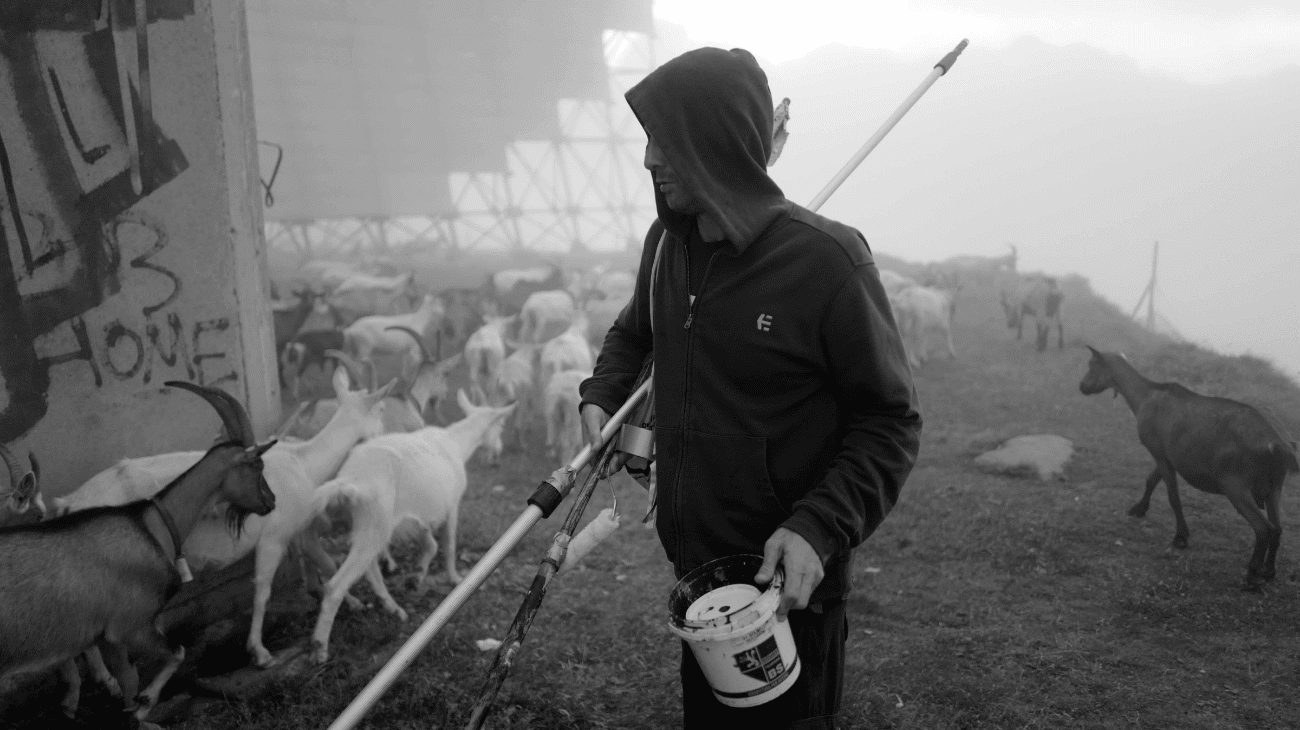
LAIKA MCMLIV
Interview with Roman paste-up artist Laika MCMLIV:
The street is the largest art gallery in the world, the most democratic, the most immediate and direct. Street art manages to portray the world in an almost instantaneous way, often synthesizing concepts for which rivers of words would be needed.
You work anonymously with a mask and keep your true identity a secret. Who is Laika? And where does your name come from?
The name Laika MCMLIV is a tribute to the little dog Laika, born in 1954, the first living being in space. The name has a double meaning because it embodies what has become my mantra: “point to space”, which implies never setting limits, but it is also a way to get out of my everyday self and look at things with detachment.
When I wear the mask, I deprive myself of the filters and preconceptions that I have, like everyone else, in everyday life. As I like to repeat, quoting Italo Calvino, “the shape of things is better seen in the distance”, and there is nothing further away than space by definition. When I wear the mask of Laika I feel as if I can see the world with greater objectivity because I observe it from far away.
On your website, you describe Laika MCMLIV as “a Roman gluer” who has been active since 2019. What themes and motifs do you deal with in your paste-ups?
Mainly I work with paste-ups, but in July I also painted a mural, and I paint in the studio on canvas or other media. One of the last drawings I pasted shows Mayor Virginia Raggi in combat gear. I drew it immediately after the eviction of Nuovo Cinema Palazzo, a self-managed cultural space in Rome for almost ten years, which was closed by the police a few days ago.
Over time I have put up posters with many characters on them, from Jovanotti to Greta Thunberg, from Salvini to Patrick Zaki and Giulio Regeni. I don’t set limits to the subjects I cover. What inspires me ends up on paper without too many restrictions.
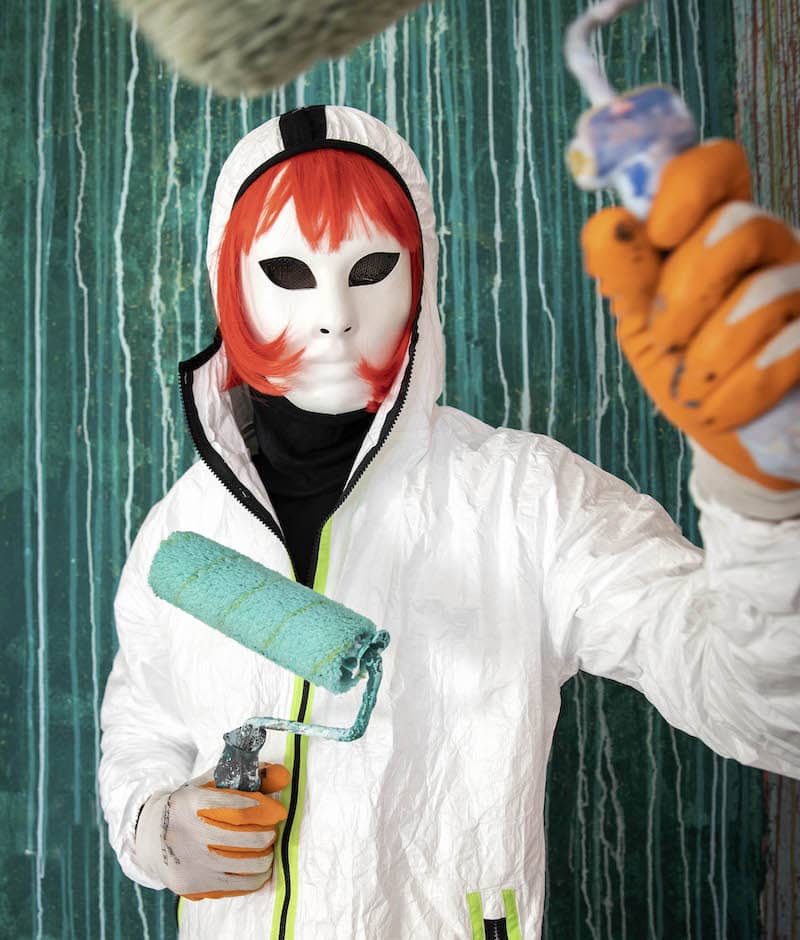
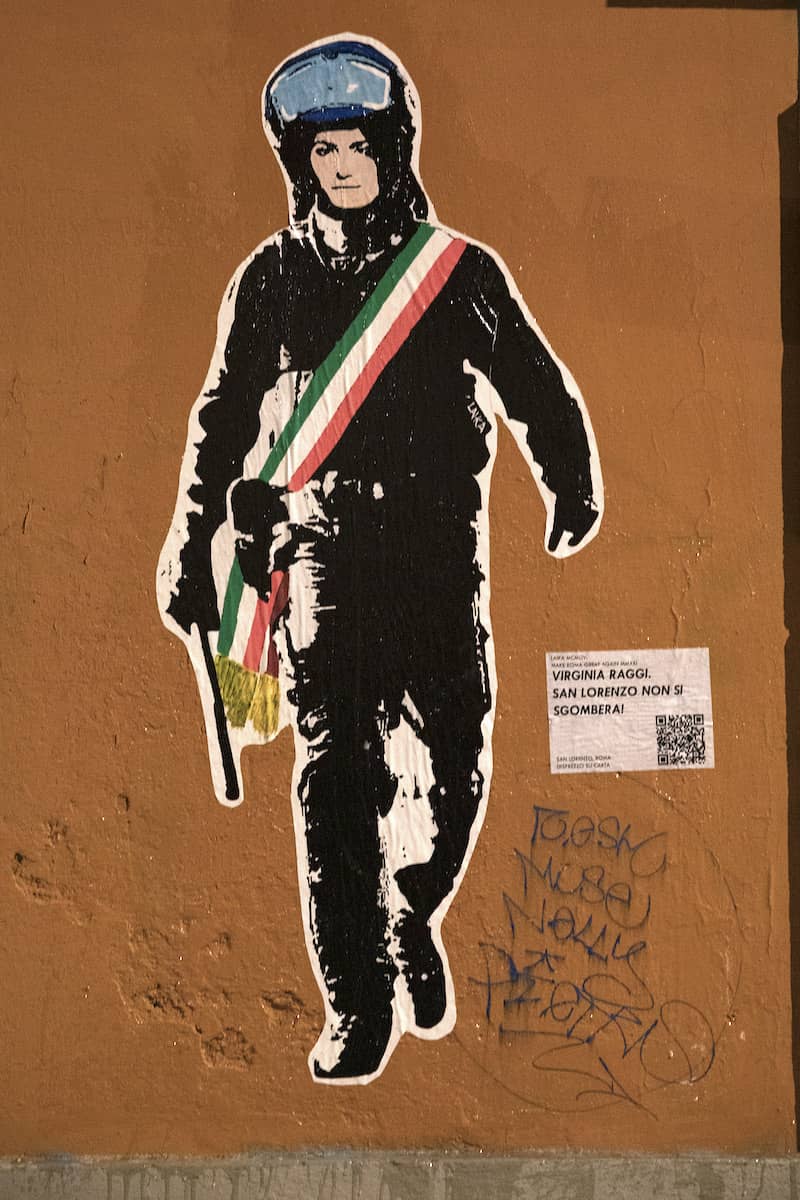
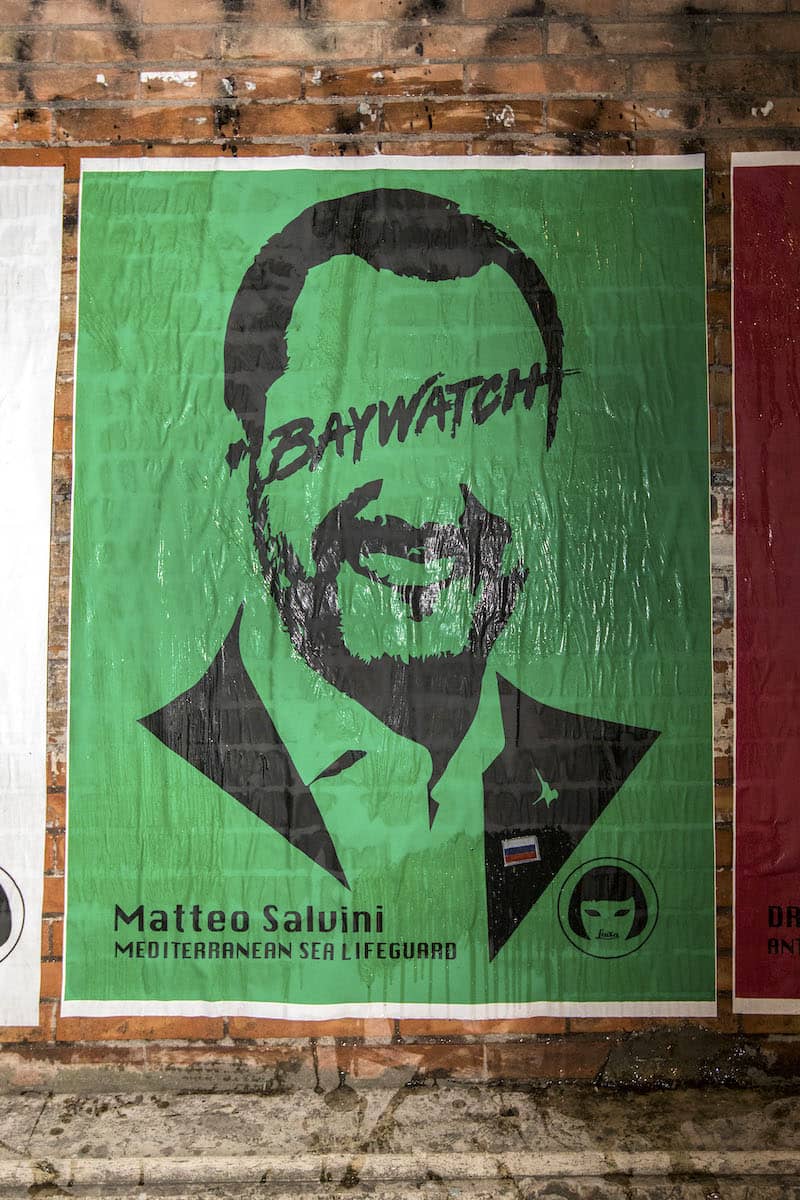
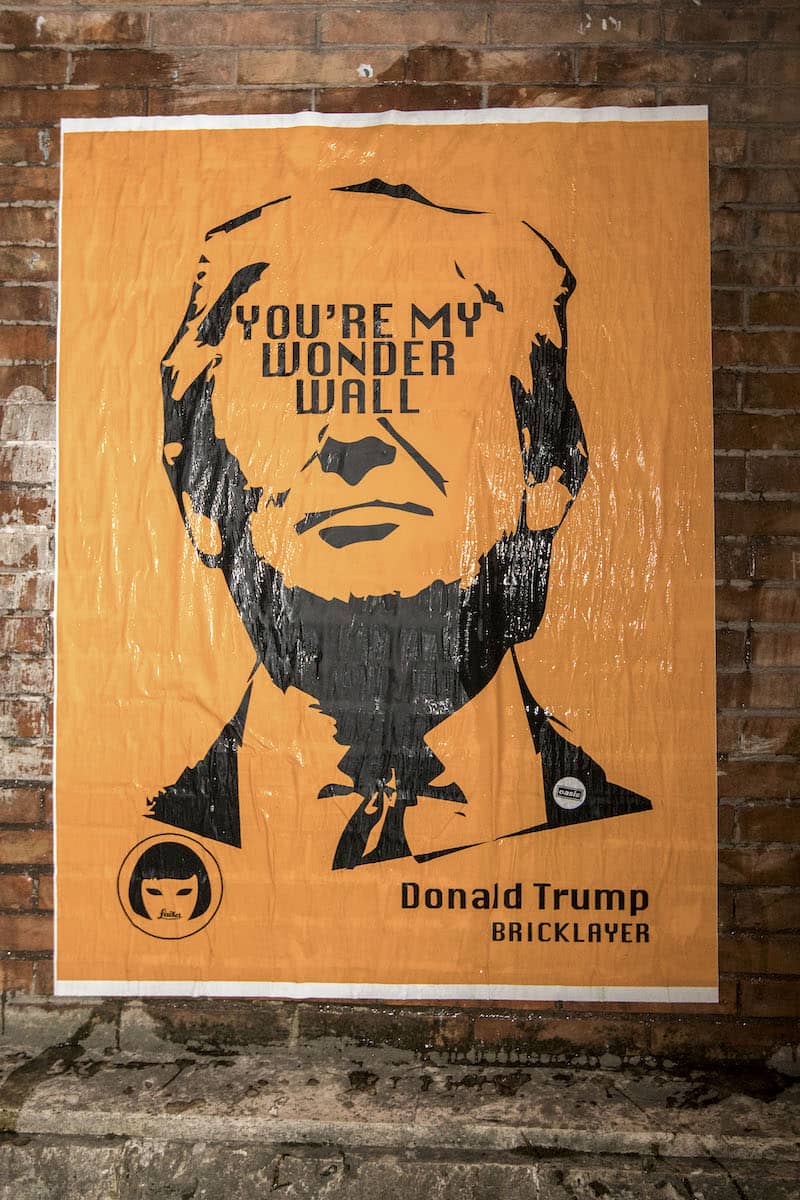
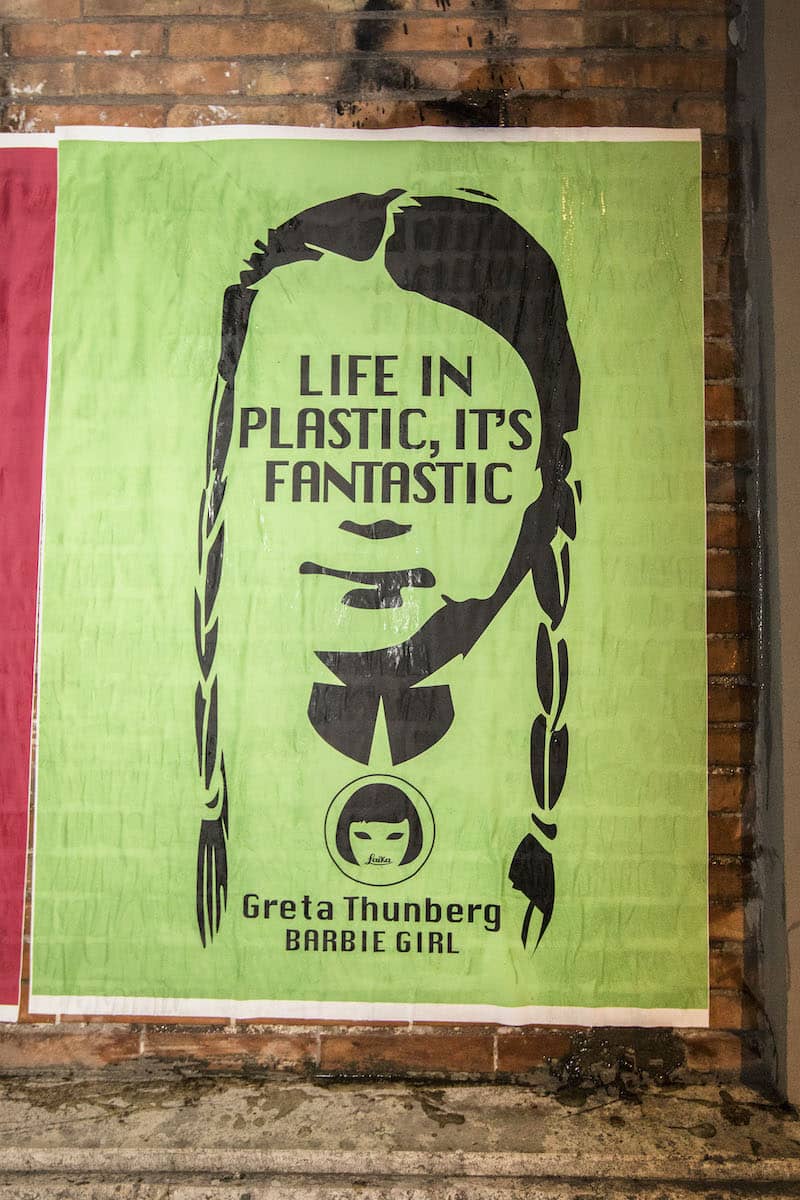
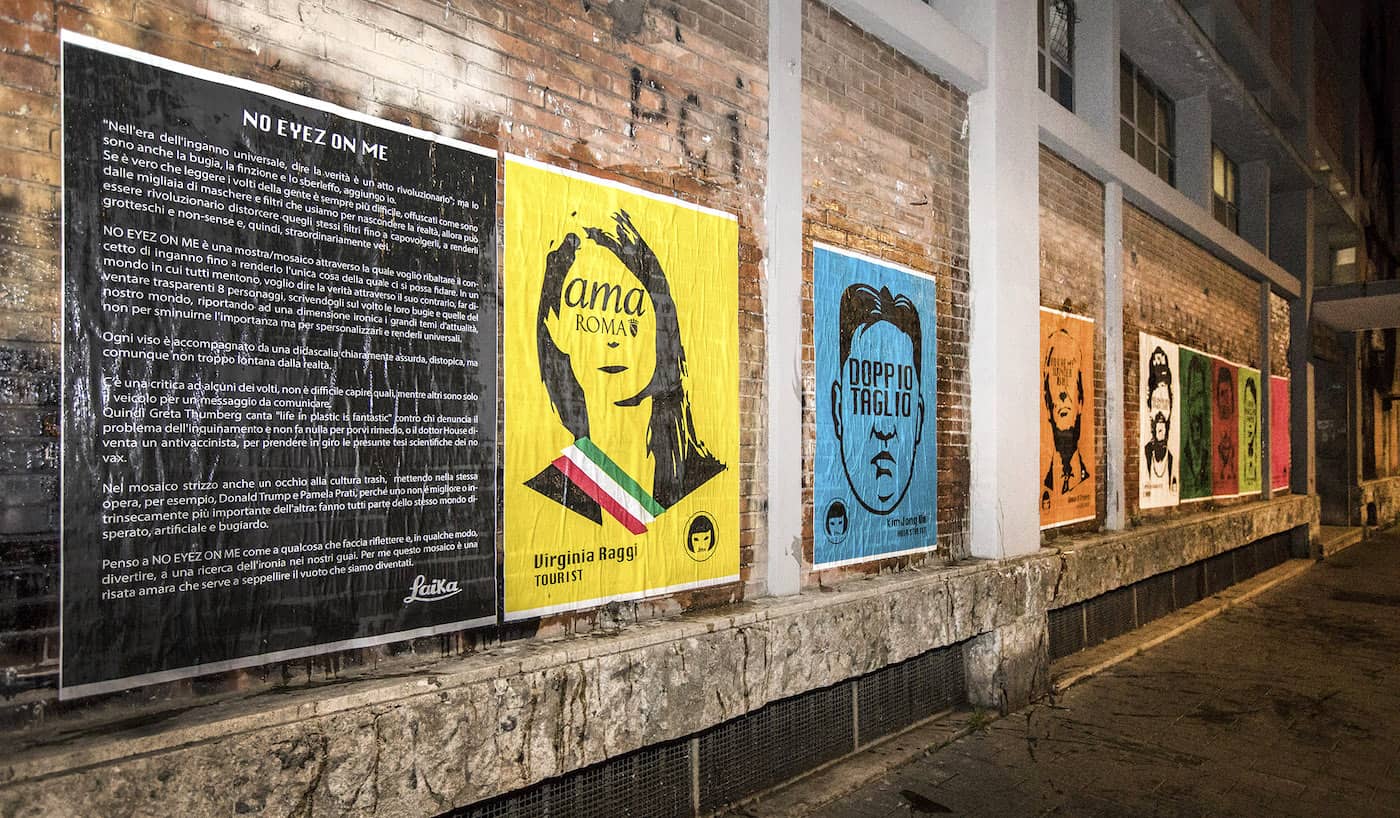
What does (street) art mean to you? How would you define your role as an artist?
The street is the largest art gallery in the world, the most democratic, the most immediate and direct. Street art manages to portray the world in an almost instantaneous way, often synthesizing concepts for which rivers of words would be needed. I find it very stimulating, and I will never give up the pleasure of wandering the streets to find the right location for one of my projects. I like that a person can “stumble” visually into something they did not expect to see there, perhaps even provoking angry reactions or outrage. Many of my works have been torn down after less than 24 hours, but that’s the beauty of the game. Urban art is alive and interacts with the city and its inhabitants.
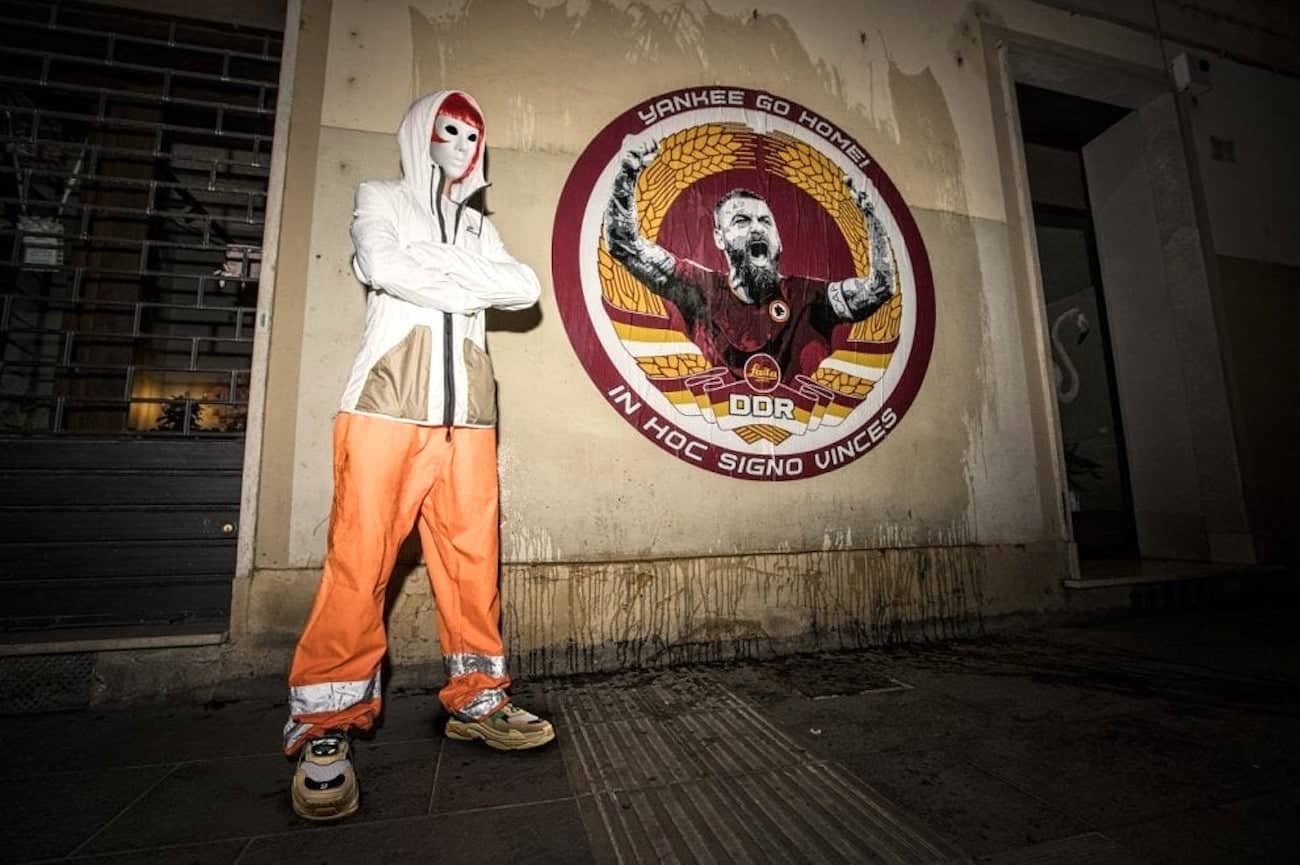
What are the differences between you as a private person and your artistic figure, Laika?
There are many. The me behind the mask is very shy, reserved. Laika’s mask is made to protect my privacy and allow me to continue my life in an extraordinarily normal way, without being influenced by what I do when wearing the white mask and the red head cover.
When I am Laika I am much more brazen and even vain. I feel freer and more confident. Actually, this double identity is very stimulating because it brings out sides of me that I didn’t even know.
Do you work alone?
Yes, I tend to. The creative side is all in my bag. When I go out on the street it happens that there are other people from my crew with me, who are also among my best friends and give me a hand in the practical management of the project.
I am very open to collaborations with other artists, even if the desire to maintain anonymity at all costs does not help in this sense, unfortunately.
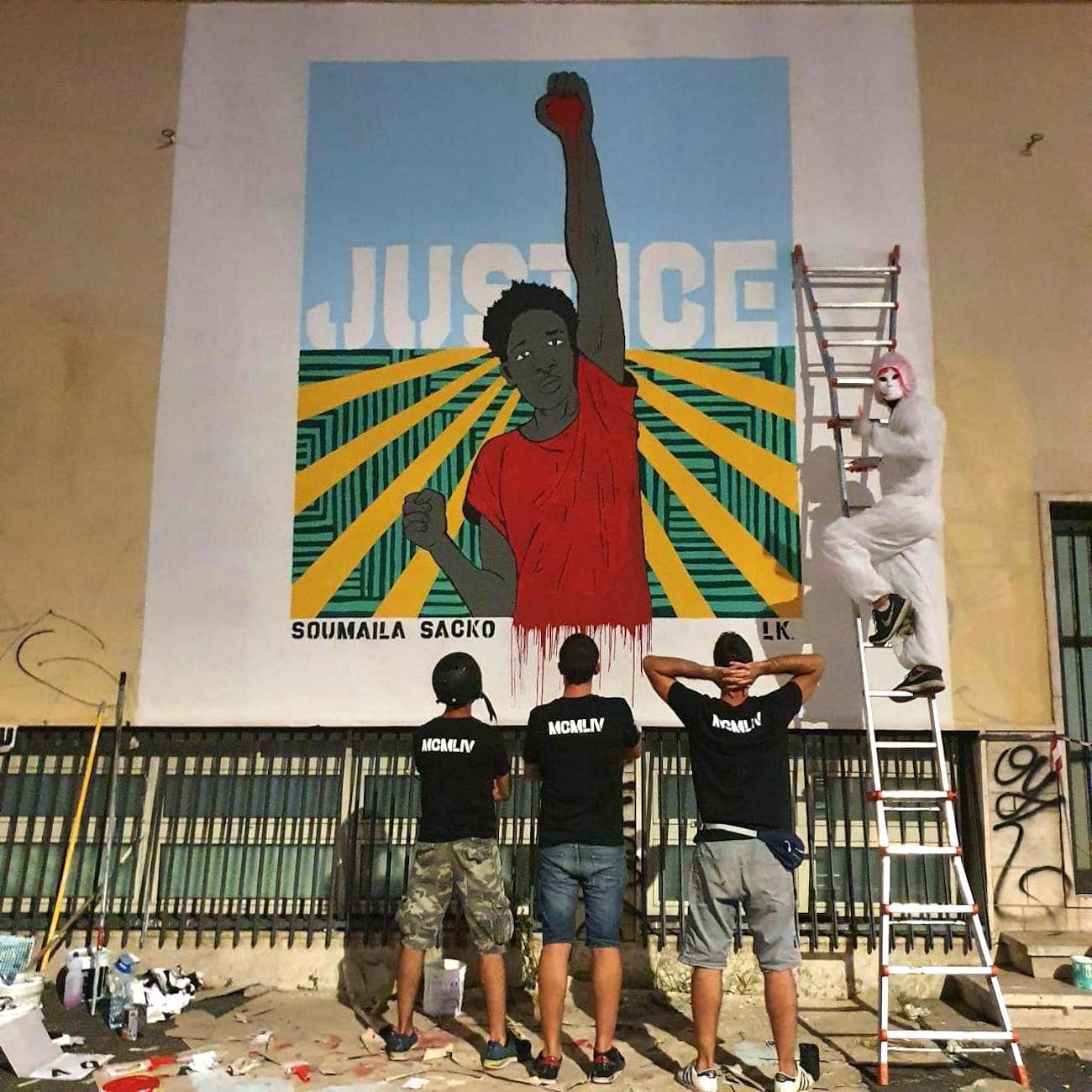
How would you describe the urban art scene in Rome? What differences do you see between Rome and other Italian or international cities?
I don’t feel like talking about other cities because I don’t have such a deep knowledge of them that I can express circumstantial judgements. Rome at the moment is a goldmine for all those who look at the walls. Everywhere you turn, there are posters, stickers, poets writing on the walls, collaborations between artists that are born in the street and collective exhibitions. Entire neighborhoods have changed their faces thanks to the murals on the buildings. The scene is alive, and it’s a great thing.
Your works often contain irony, political references and public figures like Daniele De Rossi, Matteo Salvini, Silvio Berlusconi and Greta Thunberg. What messages do you want your works to convey, and what reactions do you want to stimulate in the audience?
I do not always look for the same reaction, nor are the keys to interpretation always the same. In general, I like to keep an ironic and disenchanted look at the world. I am fascinated by the most grotesque sides, and I try to reflect them in what I draw. I look for oxymorons in almost all of my works. It is clear that this is not a universal rule; in some works this vision does not exist, but the exaltation of contradictions is what interests me the most.
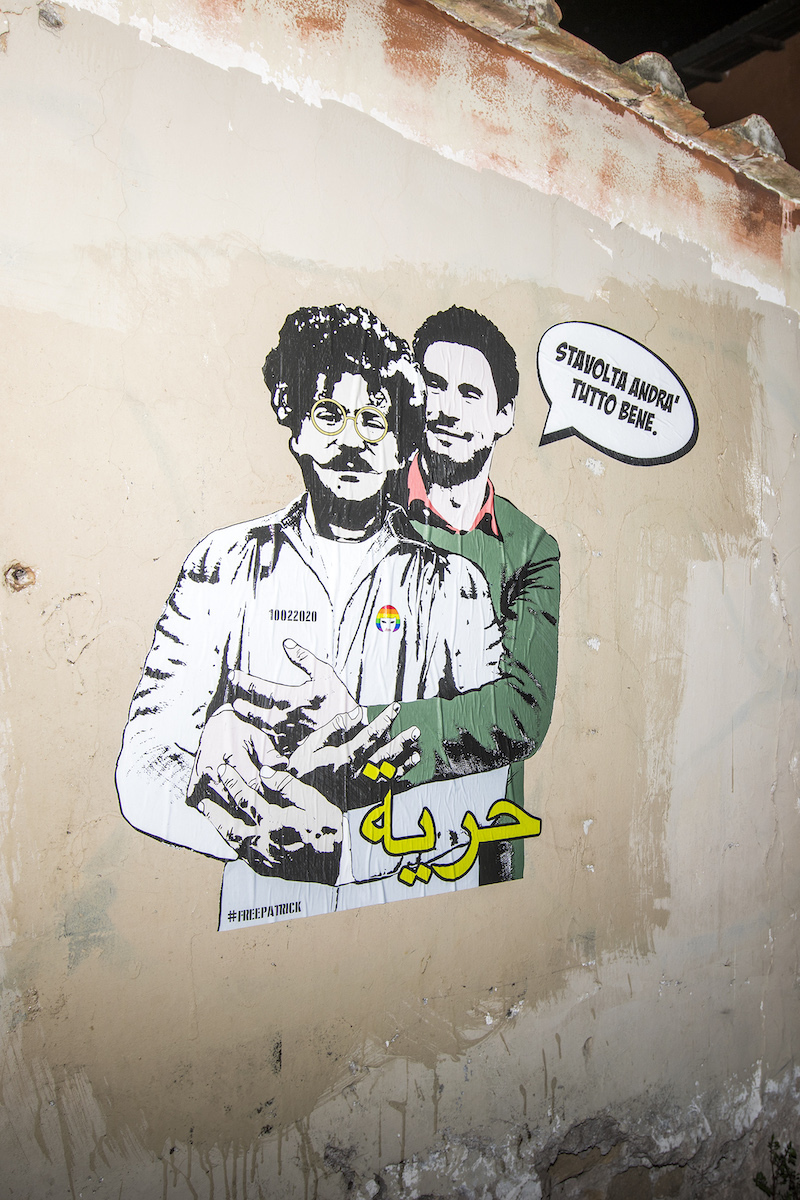
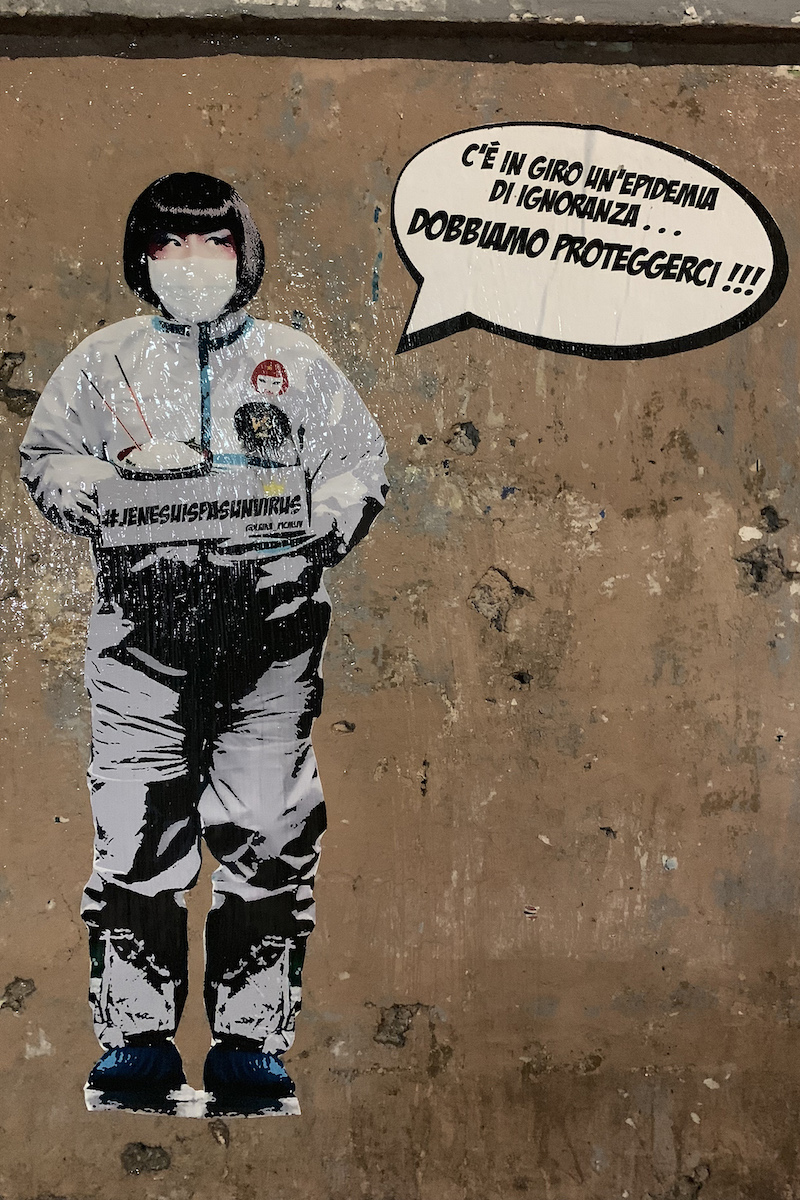
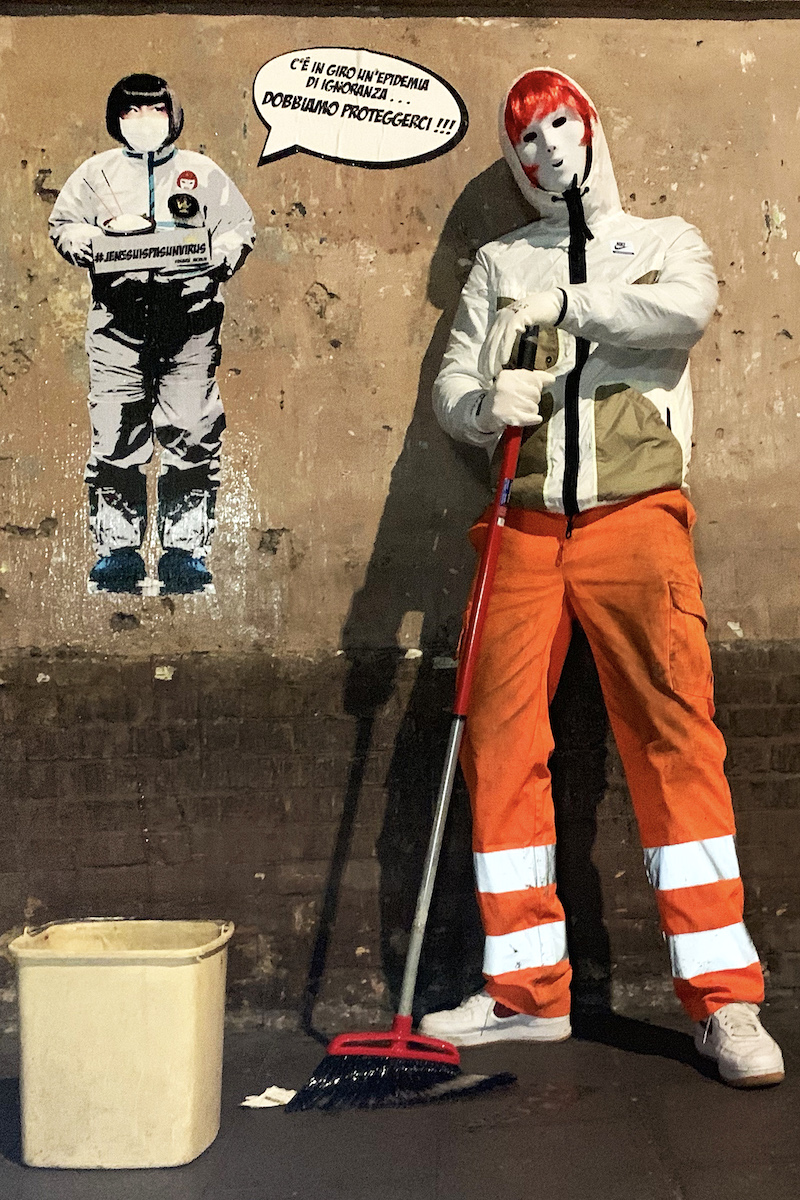
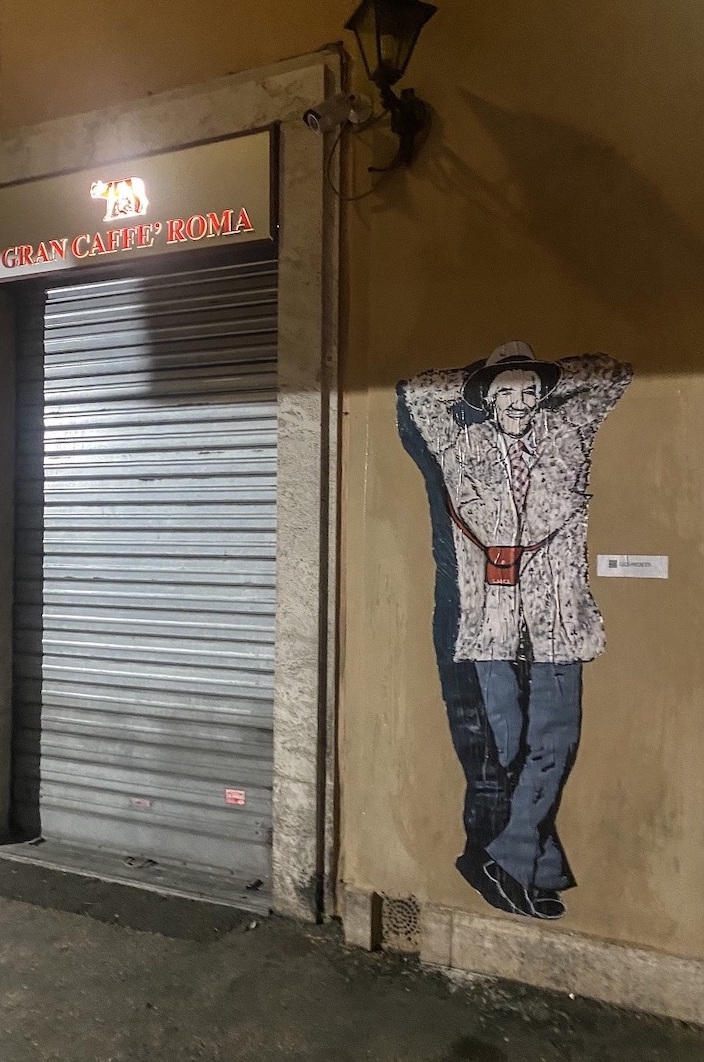
In your works there are also local personalities of Rome, such as Bomba. What inspires you to relate to them? Can you say that local celebrities shape the urban landscape of Rome, just like urban art does?
Rome is that city where anyone can become a myth. Romanity is so theatrical, and even so rare, that it lends itself to the development of iconic characters like Fabio, the “Bomba Anarchica”. There are places in Rome that exist only according to the characters who live there.
Are there other (street) artists that inspire you?
A lot. I always look around to learn, even from those who are very far from what I do. From the mythical Banksy and Obey to Maupal, Lucamaleonte, Mimmo Rotella, Sten Lex, Qwerty, Blu and I could go on. I like beautiful things, and I try to know as much as possible.
How do you approach your art in a methodical and organizational way?
There is no fixed methodology in terms of time organization. There are works that I start and finish in one evening and others that I stay on for months. Ideas you think, set aside and shoot.
As far as techniques go, I’m trying to experiment as much as possible: from manual drawing to digital drawing, collage, acrylic, composition with more works than the ones I then bring out. I try to understand what I feel comfortable with and use it.
The places where I put the works for me are part of the work itself; they represent the frame, and I try as much as possible to relate to the concept of the drawings. This is not always possible, but I always think about it a lot.
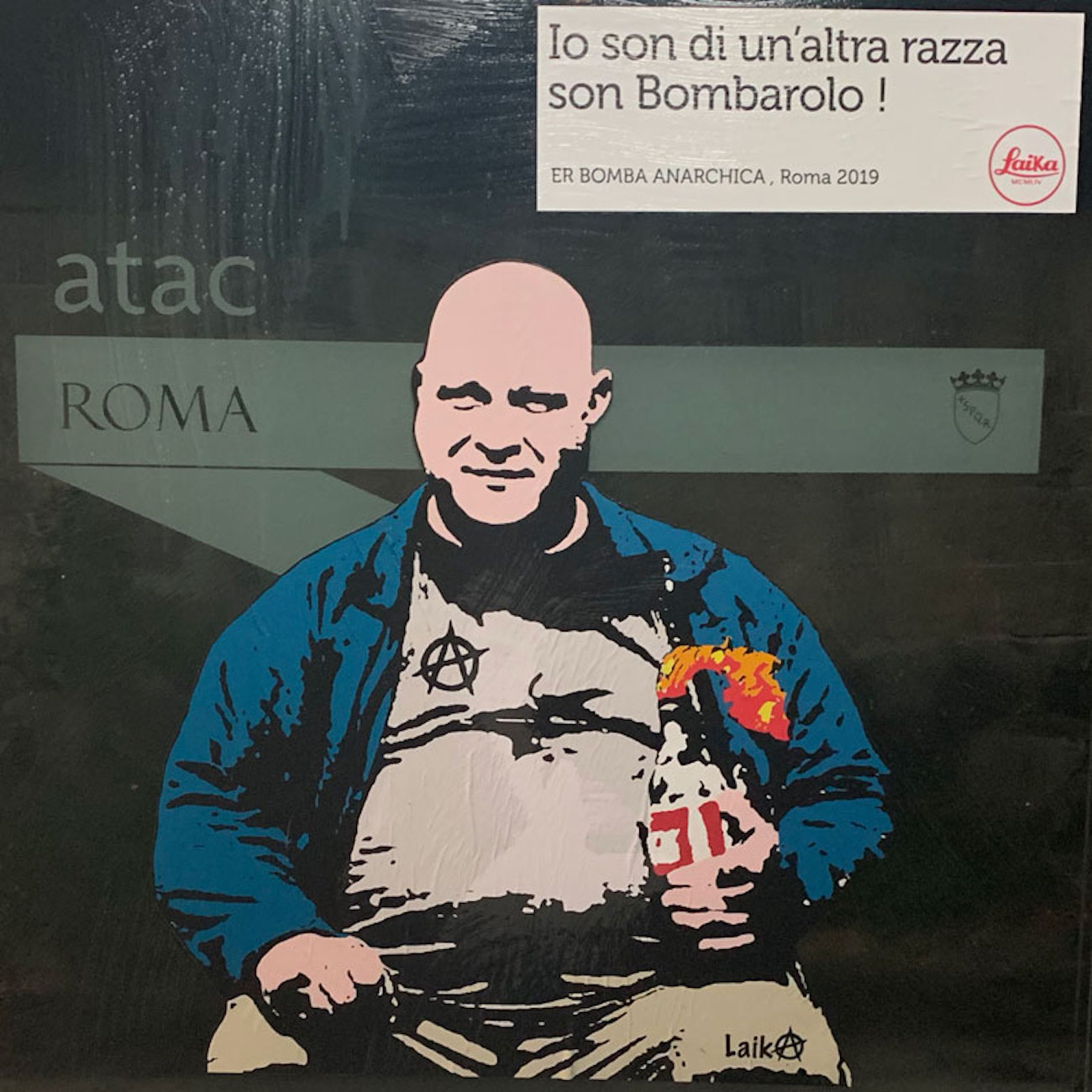
Women are still underrepresented in the general art market. In your experience, is being a woman making urban art more difficult than being a male artist?
Being a woman is more difficult than being a man. That’s the whole point. I don’t think art is an exception. My experience is pretty “sui generis” anyway because I’ve decided to never show my face. I refuse the idea of having to give an image of myself, offering something totally impersonal instead, a white mask, so that those who look at my work do not see it filtered by my physical appearance.

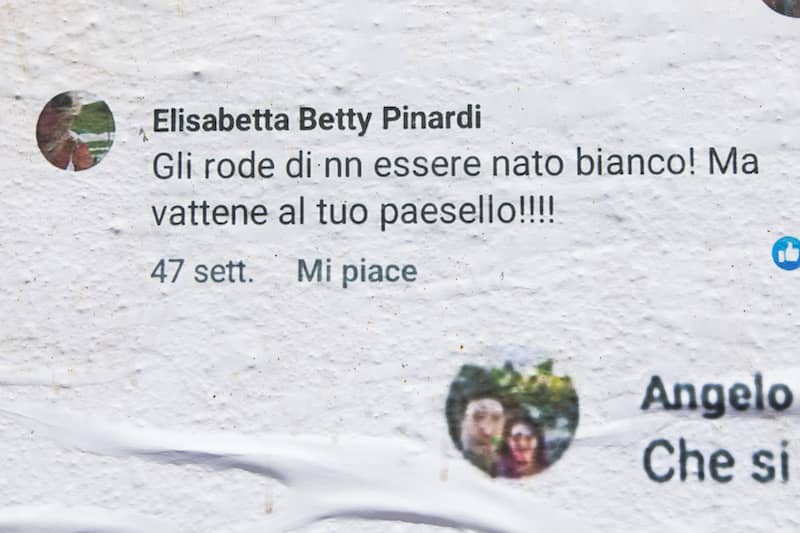
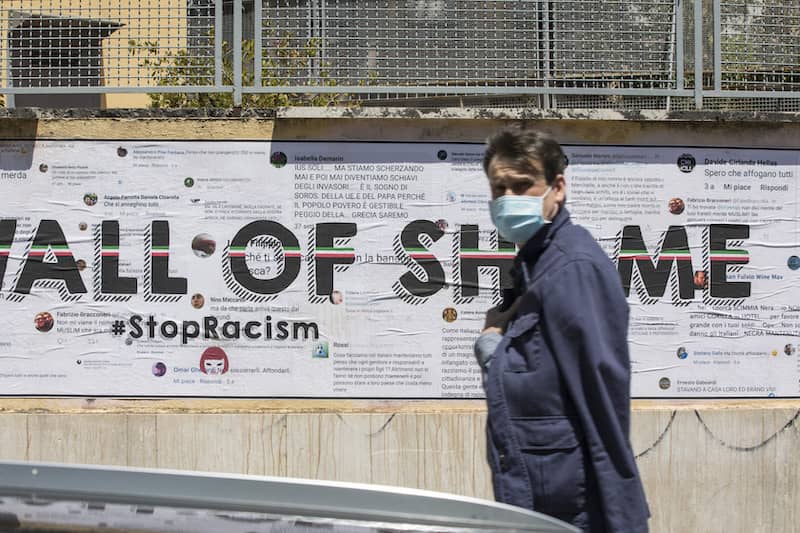
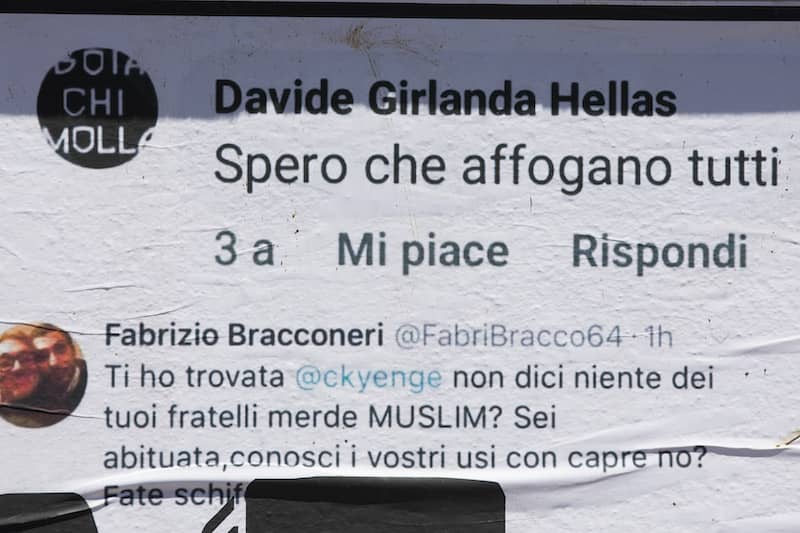
In your opinion, is the traditional art market combinable with the essence of urban art, or does it mean acting independently and only in a public space?
The answer has already been largely given by facts. Street art ends up in galleries and museums. There are pieces made by artists from the street that are priced in the millions. Not to come to terms with this reality would be crazy and anachronistic.
What are your future plans, projects and dreams?
I have many ideas for the future: a couple of long-term projects that I am already working on and that will see the light in a while.
I don’t anticipate anything though. I like surprises.
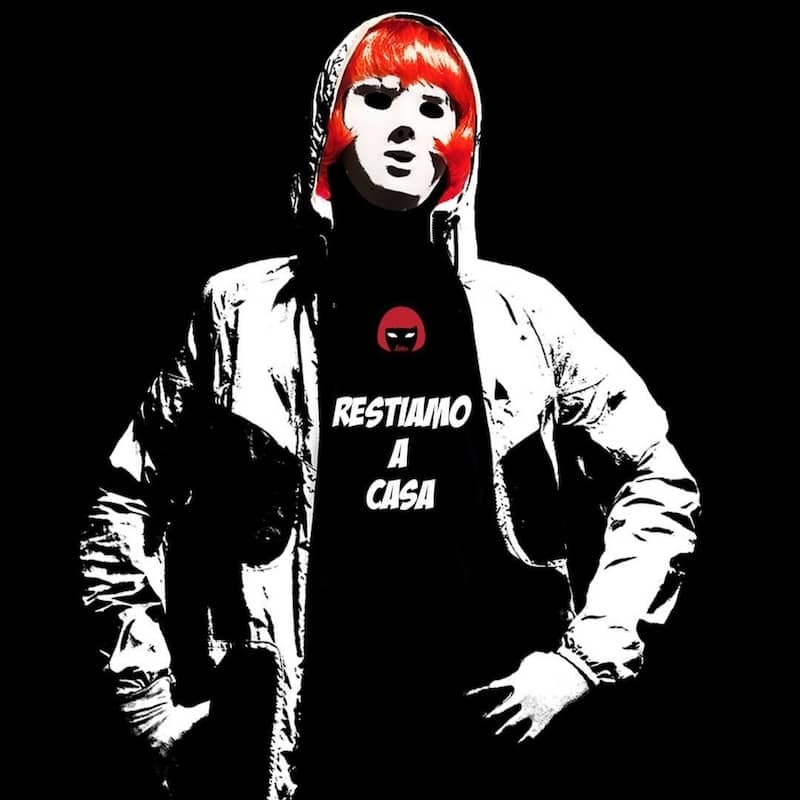
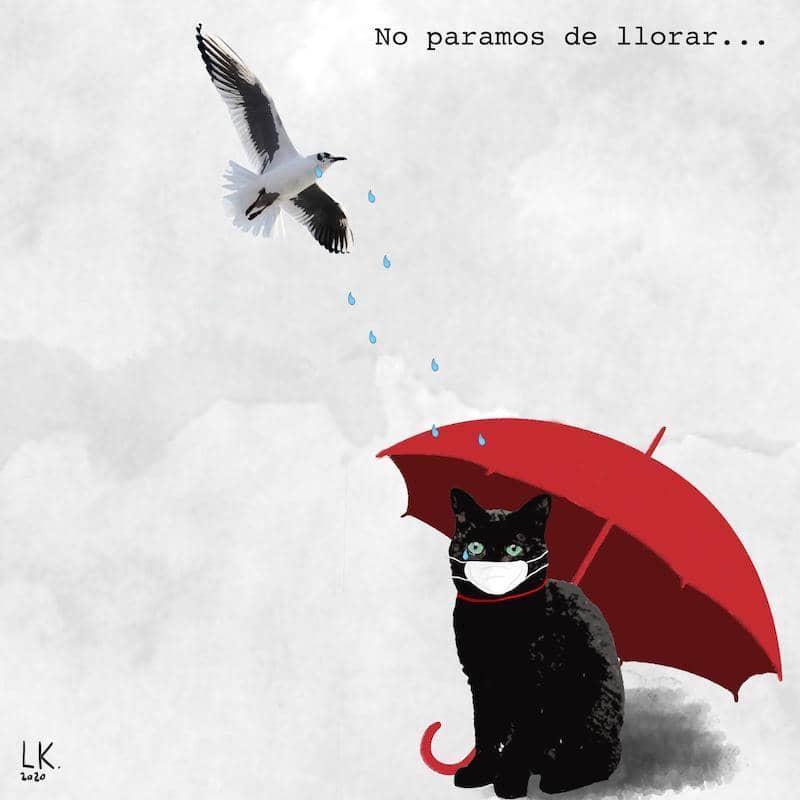
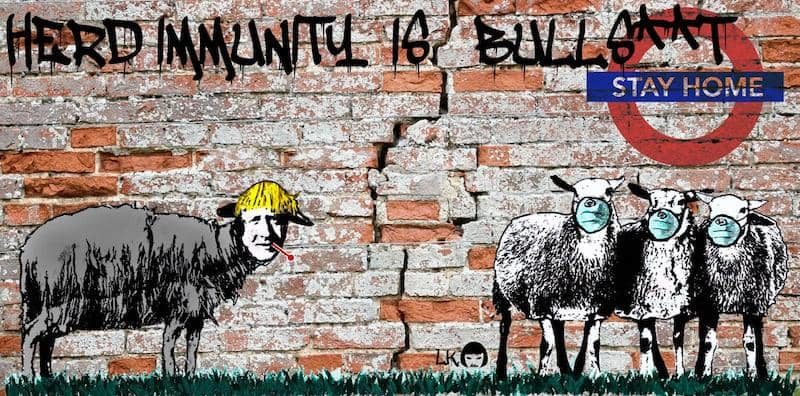
_______________________________________
Pictures © LAIKA MCMLIV
February 2021


